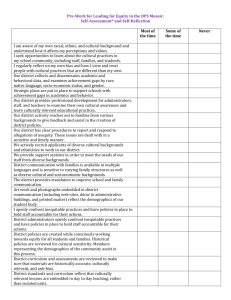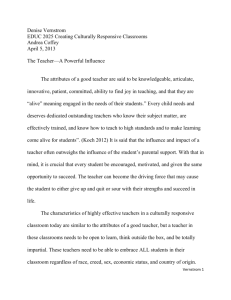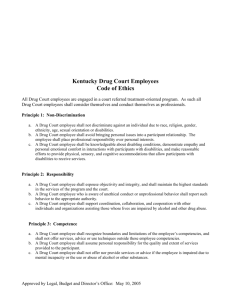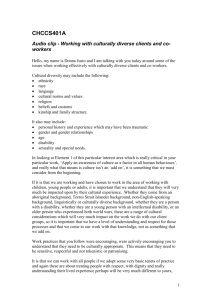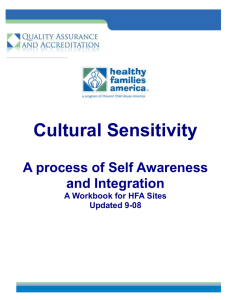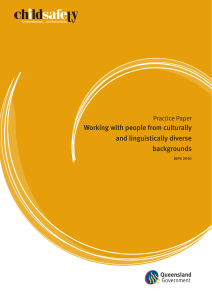Building Focus Group
advertisement
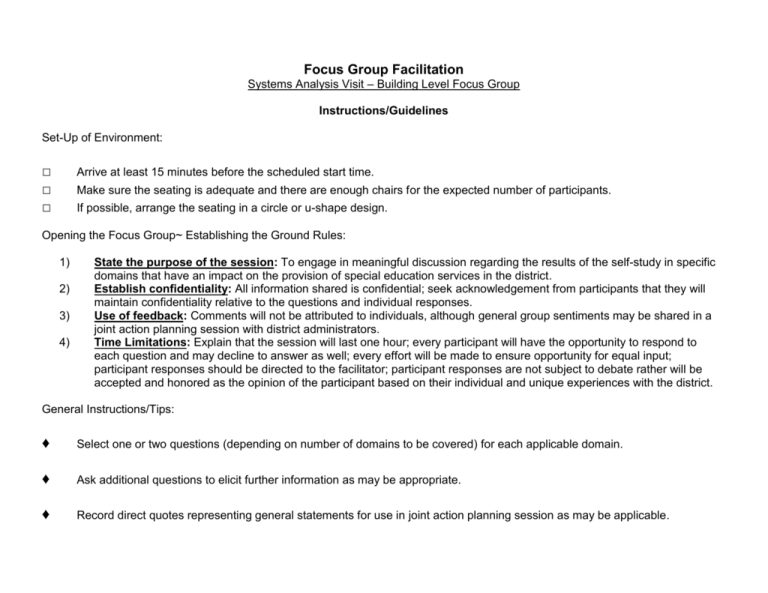
Focus Group Facilitation Systems Analysis Visit – Building Level Focus Group Instructions/Guidelines Set-Up of Environment: □ □ □ Arrive at least 15 minutes before the scheduled start time. Make sure the seating is adequate and there are enough chairs for the expected number of participants. If possible, arrange the seating in a circle or u-shape design. Opening the Focus Group~ Establishing the Ground Rules: 1) 2) 3) 4) State the purpose of the session: To engage in meaningful discussion regarding the results of the self-study in specific domains that have an impact on the provision of special education services in the district. Establish confidentiality: All information shared is confidential; seek acknowledgement from participants that they will maintain confidentiality relative to the questions and individual responses. Use of feedback: Comments will not be attributed to individuals, although general group sentiments may be shared in a joint action planning session with district administrators. Time Limitations: Explain that the session will last one hour; every participant will have the opportunity to respond to each question and may decline to answer as well; every effort will be made to ensure opportunity for equal input; participant responses should be directed to the facilitator; participant responses are not subject to debate rather will be accepted and honored as the opinion of the participant based on their individual and unique experiences with the district. General Instructions/Tips: ♦ Select one or two questions (depending on number of domains to be covered) for each applicable domain. ♦ Ask additional questions to elicit further information as may be appropriate. ♦ Record direct quotes representing general statements for use in joint action planning session as may be applicable. Potential Focus Group Questions Area/Domain Focus Group Question(s) What professional development opportunities are available on topics of cultural, language, and ethnic diversity and the influence on school achievement? School Governance (Domain IA) What building-level strategies or activities are implemented to create a school culture in which all students feel they are listened to, their opinions valued, and they are involved in decision-making? Does the building accept the responsibility for the achievement of all students? What are some examples? School Climate (Domain IB) Does the building sponsor or have access to professionally-conducted workshops where building staff can identify their cultural and/or linguistic biases and work to address them? Family Involvement (Domain II) Please describe how the building establishes and/or maintains an effective ongoing communication system with parents. Focus Group Response How does the building develop a welcoming environment for families from diverse backgrounds? Does the building involve families in the pre-referral intervention process as respected partners and ensure they are well-informed at all times? What are some examples? Does the building curriculum reflect an integration of ethnic and cultural content throughout programming, rather than assigning the study of diverse cultural groups to a single unit or one month? Curriculum (Domain III) How does the building curriculum support and value the experiences and information students have learned within their cultural groups? How does the building ensure that the curriculum is made interesting and challenging for all students (not focused on rote learning activities). Teaching & Learning (Domain IVA) Are teachers provided an opportunity to discuss the ways in which race, ethnicity, culture, language, and social class interact to influence student behavior? How are teachers made aware of the second language acquisition process and how to support students who are English language learners? Do teachers utilize instructional materials that reflect images and perspectives from diverse groups? What are some examples? Are a range of assessment strategies used that provide students from diverse backgrounds opportunities to demonstrate their mastery and skills, including the opportunity to share what they know in their native language if they wish? What are some examples? Classroom Achievement & Assessment (Domain IVB) How does the building identify and use multiple assessment tools and strategies that are researchbased and culturally valid? How do staff know when and how to provide accommodations to students with special needs and English language learners? Behavior Management (Domain IVC) How are building staff made aware of differences in cultural practices that might impact student behavior? How does the building ensure that classroom rules and procedures are written and explained in language that is clear to students from culturally and linguistically diverse backgrounds? Does the building utilize resource persons belonging to or familiar with a students' cultural and linguistic background to assist in planning behavioral interventions? How does the building ensure that students have been provided with meaningful, appropriate prereferral strategies, adequate opportunities to learn, and validation of their difficulties across time and settings? Pre-referral/ Referral (Domain VA) How does the building ensure that pre-referral strategies are varied and substantive, such as transferring a student to another teacher's class or providing individual tutoring through an after-school program, etc? What controls for classroom room size are in place to ensure an optimal learning environment that addresses the needs of all the students? Assessment/ Intervention (Domain VB) How are administrators, teachers, and support personnel made aware of the evaluation guidelines outlined in the Individuals with Disabilities Education Act (IDEA 2004). How does the building ensure that instruction is modified appropriately to facilitate achievement before students are referred for special education evaluation? Does the assessment team always include a resource person familiar with the student's cultural background? How does the building ensure that culturally appropriate and culturally valid assessment tools are used for evaluation?
